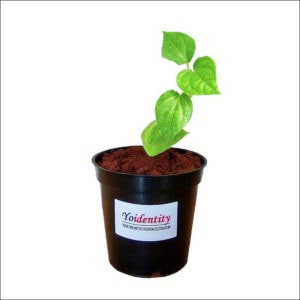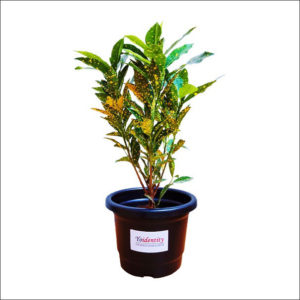Description
Fittonia Albivenis, Nerve Plant
Fittonia is a lovely plant with delicately veined, deep green leaves. Although the most popular vein color is silvery white, you can also readily find fittonia with veins in pink, white, and green. They are available as trailing houseplants or low-growing creepers that are perfectly fit for terrariums or bottle gardens.
Fittonia (nerve plant) is a genus of flowering plants in the family Acanthaceae, native to tropical rainforest in South America, mainly Peru.The most commonly grown are F. albivenis and its cultivars. They are spreading evergreen perennials growing 10–15 cm (4–6 in) tall.
They bear lush green leaves with accented veins of white to deep pink and have a short fuzz covering their stems. Small buds may appear after time where the stem splits into leaves. Flowers are small with a white to off-white colour. Plants are best kept in a moist area with mild sunlight and temperatures above 55 °F (13 °C), therefore in temperate areas they must be grown as houseplants. Without water for a few days, this plant is known to “faint” but is easily revived with a quick watering and resumes its healthiness. Its spreading habit makes it ideal as ground cover.
Planting and care
- As the nerve plant originates in a tropical setting, it flourishes within a high humidity environment. Misting may be required to maintain humid-like conditions.
- Fittonia nerve plant likes well drained moist soil, but not too wet.
- Water moderately and let growing nerve plants dry out between waterings.
- Use room temperature water on the plant to avoid shock.
- Growing about 3 to 6 inches by 12 to 18 inches or longer, the Fittonia nerve plant tolerates bright light to shade conditions but will truly flourish with bright, indirect light.
- Low light exposure will cause these plants to revert to green, losing the veins vibrant splashes of color.
- Growing nerve plants should be placed in a warm area, avoiding drafts which will shock the plant just as water that is too cold or hot.
- Think rain forest conditions and treat your Fittonia nerve houseplants accordingly.
- Feed as recommended for tropical houseplants per the instructions of your fertilizer brand.
- The trailing nature of the plant can lead to a straggly appearance.
- Prune the tips of the nerve plant to create a bushier plant.
Fittonia propagates readily from leaf-tip cuttings. Take the leaf-tip cuttings in late spring or early summer, right around the same time you repot the plant. Make sure to include at least two growing nodes on the cutting to obtain the best results.
Once youve potted up the cutting in a peat-based soil mix, you can expect fittonia cuttings to sprout roots within two to three weeks.
Repot annually in spring or early summer, around the same time you repot the rest of your tropical houseplants. A healthy fittonia will quickly assume a sprawling growth habit, so if you have a large plant that you want to keep contained in a dish garden or terrarium, take leaf tip shoots for propagation, then root prune the parent plant and place it back into the same container with fresh soil.Sunlight Indirect or dappled sunlight. They also thrive under fluorescent lights. Dont expose to full sunlight. Watering Plants should be kept constantly moist, with high ambient humidity. Mist frequently or grow in a tray with pebbles and water. Soil Fittonia can be easily grown in conventional, peat-based potting soil. Make sure it can retain moisture, but will not remain soggy. Temperature Average (around 70 degrees F). They can tolerate temperatures down to the mid-60s or into the low 80s. Fertilizer Feed during the growing season with a weekly dose of weak liquid fertilizer or with controlled-release fertilizer.






Reviews
There are no reviews yet.